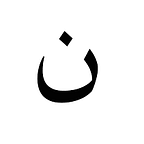#IStandwithHer: What Jody and Ilhan teach us about the response to Indigenous and racialized women who speak truth to power
There are many people much more qualified than I, who can discuss with you the content of Congresswoman Ilhan Omar’s alleged comments and Jody Raybould- Wilson’s testimony. Many will have reflections, opinions, philosophical and legal arguments about what has been said. But that’s not what I have been thinking about for the last month.
What has been most striking to me, is the predictability of the type of responses that these incredible women have received. North American society responds to women in Indigenous and racialized bodies, who are speaking truth, in very similar ways. It doesn’t matter if you are a powerhouse game changer, as both Omar and Raybould-Wilson are, or simply advocating for your child in their school, making transparent a problematic incident in your workplace, or seeking institutional change. The end goal of this discourse is to discredit the Indigenous/racialized woman and silence her message.
There will be those who are critical of the tone of her message. How it is said, the inflection in the voice, the facial expression that accompanies the words, the position of the arms, hands, even the manner in which she is sitting. Standards of this elusive civility are used to detract from the content of the message and instead focus on its delivery. No amount of caution in the selection of words spoken or softness in her face will offer protection. The Indigenous or racialized woman will be characterized as offensive or aggressive when speaking truth to power. She will be chastised for her ‘manners’ and be told she would be heard, should she be kinder, less direct, and smile while speaking. The ‘aggression’ of her tone is seen as an extension of her identity, which she is asked to check at the door.
After tone-policing, the critics move on to examining the Indigenous or racialized woman’s intention in taking a stance. Her goal, they assert, is to make those in power and their friends ‘feel bad’ and/or ‘look bad.’ Feelings and character become centered- displacing the oppressive actions and systems that the Indigenous or racialized woman has brought into the light. The Indigenous or racialized woman’s intentions, we are told, grow from her anger, from being overly emotional, sensitive and (wait for it)…unprofessional.
The other driving force for the Indigenous or racialized woman is her identity-based agenda. Although every one of us is shaped by our race and gender, it is only with the Indigenous or racialized woman that this is pathologized, viewed as unnatural, and treated as unethical. Ilhan Omar said in a recent interview, “there is an interest in putting us in a box of constantly defending our identities. I am not interested in being in that box. I am interested in defending my ideas, and not my identity.” Ilhan Omar’s words capture how dominant culture seeks to silence the message and discredit the messenger. Whether it is moral outrage, hurt feelings, vilification of the Indigenous or racialized woman or accusing her of having ‘an agenda’- each of these moves is intended to take away from the truth being spoken while continuing to uphold status quo.
The final frontier is credibility. Once the vortex of tone and intention takes hold, the public is then expected to recognize the incompetence of the Indigenous or racialized woman. It follows, that had she truly had the skills, she would have been better able to understand the reality before her, better able to solve the challenge, better able to communicate her concerns. This is not limited to work settings. School, profession, parenting, activism… in every space the Indigenous or racialized woman speaks out, doubts are raised about her abilities, feigning disappointment for what had been believed as compared to what is now evident. Further, this ‘failure’ is not hers alone. It is to be owned by her community, the people she advocates for, and all Indigenous and racialized women. Once again, her identity, and not her ideas, are at the centre.
This impact of this pattern of responses to Indigenous and racialized women speaking truth to power is two-fold. It takes away from the content of the message and distracts from the issue being surfaced(often related to oppression). It also serves to isolate the Indigenous or racialized woman- casting her as an outsider and a danger to others in the space. By chastising her in this manner, the implicit message to others is to not break rank and to not think of standing with her in solidarity. The risk, is losing- anything from access, to resources, to opportunities, to support, even to inclusion. Solidarity is equated to punishment.
So who shows up for the Indigenous and racialized woman who speaks truth to power? Who stands with her privately and publicly? Who stays knowing the risks? Who names the targeting and berating for what it is? Who calls out those responsible? Who holds them accountable?
When you are deciding where you will stand, what you will say, let there be no doubt that this pattern of responses to Indigenous and racialized women who speak truth to power is nothing short of a violence. It is a perpetuation and further normalization of the oppression of all Indigenous and racialized women. And it has to stop.
